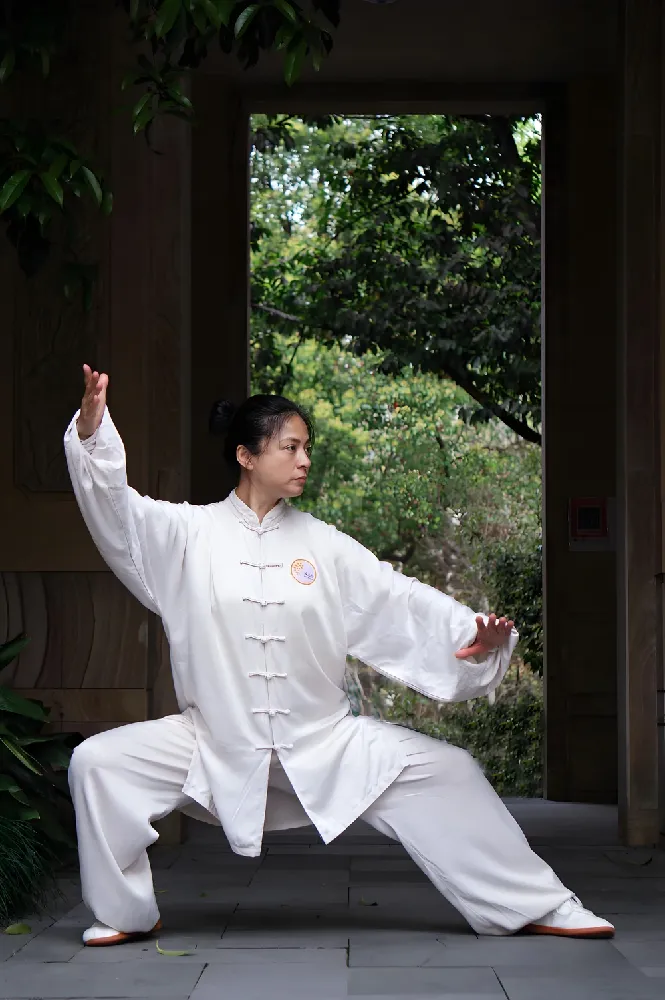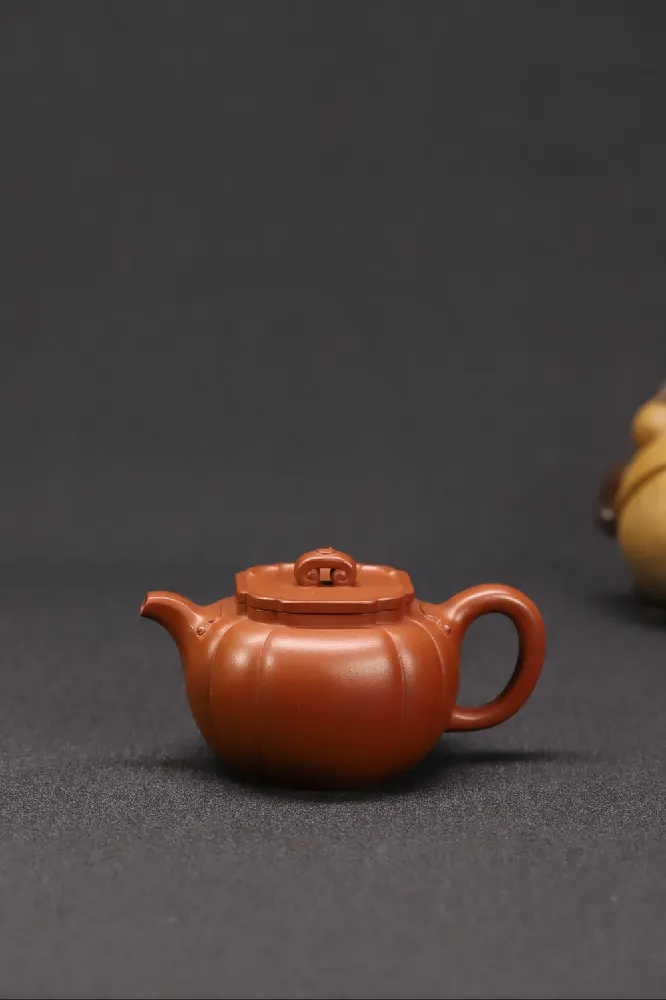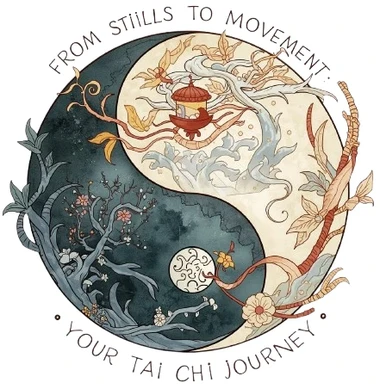When the World Speeds Up, How Do You Slow Down?
Your heart races. Your thoughts spiral. Your to-do list grows faster than your breath.
In a culture that glorifies “busy,” stress isn’t just common—it’s constant. It’s the background hum of modern life. And for many of us, it’s become the default setting.
I’ve felt it too. That tightness in the chest. That mental fog. That moment when even sitting still feels like too much.
Meditation helps, they say. But what if sitting still makes you more anxious? What if your body needs to move before your mind can rest?
That’s where Tai Chi comes in.
It’s not just slow movement. It’s mindfulness in motion. It’s a way to calm your nervous system without forcing stillness. For me—and for thousands of others—it’s become a lifeline.
Let’s explore how Tai Chi for stress works, why it’s different, and how you can start today.

The Science of Calm: How Tai Chi Resets Your Nervous System
From Fight-or-Flight to Rest-and-Digest
Stress activates your sympathetic nervous system. That’s the fight-or-flight mode. It’s useful in danger. But when it’s always on, it wears you down.
Tai Chi flips the switch.
Its slow, rhythmic movements activate the parasympathetic system—the rest-and-digest mode. Your heart rate slows. Your breath deepens. Your muscles soften.
Studies show Tai Chi lowers cortisol, the stress hormone. It’s not magic. It’s biology.
Exclusive Tip: Practice Tai Chi outdoors. Nature amplifies the calming effect. Even 10 minutes under a tree can feel like a reset.
Mindfulness in Motion: Interrupting the Spiral
When you’re anxious, your mind loops. You replay worries. You imagine worst-case scenarios. You get stuck.
Tai Chi interrupts that loop.
Each movement demands attention. Where’s your foot? How’s your breath? Are your shoulders relaxed?
You can’t spiral when you’re focused on flow.
It’s like meditation—but for people who fidget. People who think too much. People who need to move to feel.
Releasing Tension Stored in the Body
Stress doesn’t just live in your head. It settles in your shoulders. Your neck. Your lower back.
Tai Chi unwinds it.
The slow, circular motions stretch tight muscles. The breath softens locked joints. The awareness helps you notice what you’ve been holding.
I’ve had students cry during “Cloud Hands.” Not from pain—but from release.
Exclusive Tip: Before bed, do 3 minutes of “Wave Hands Like Clouds.” It’s gentle. It’s soothing. It helps you sleep.
Rebalancing Energy: A Traditional Perspective
In Chinese medicine, stress is seen as “Qi stagnation.” Your energy gets stuck. You feel blocked. Frustrated. Tense.
Tai Chi moves the Qi.
It opens channels. It harmonizes flow. It restores balance.
You don’t need to believe in Qi to feel the difference. Just move. Just breathe. Just notice.
Exclusive Tip: During practice, imagine your breath as light moving through your body. It’s not woo-woo. It’s awareness. And it works.

A Simple Stress “Emergency Sequence” You Can Do Anywhere
You don’t need an hour. You don’t need a teacher. You don’t even need a mat.
Here’s a 3–5 minute Tai Chi sequence I use when stress hits hard. It’s simple. It’s powerful. It works.
1. Wuji Standing: Return to Baseline
Stand with feet shoulder-width apart. Knees soft. Spine tall. Arms relaxed. Eyes gently closed or lowered.
Feel your feet. Feel your breath. Feel the ground holding you.
Stay for 2–3 minutes. Let the noise fade.
Exclusive Tip: Imagine roots growing from your feet. Let them anchor you. Let them hold you.
2. Cloud Hands: Smooth the Mind
From Wuji, begin to shift weight side to side. Let your arms float like clouds. Circle them gently. Follow your breath.
This movement calms the nervous system. It soothes the mind. It feels like water.
Exclusive Tip: Sync your breath with your movement. Inhale as you shift. Exhale as you return.
3. Holding the Ball: Gather and Release
Stand tall. Imagine holding a ball of light at your chest. Inhale—gather calm. Exhale—release tension.
Open and close your arms slowly. Let the breath guide you.
Exclusive Tip: Visualize the ball growing brighter with each breath. Let it fill you. Let it soften you.
Beyond Movement: Tai Chi Philosophy for Everyday Stress
Tai Chi isn’t just a sequence of slow moves. It’s a mindset. A way of responding to life’s chaos with grace instead of grit.
Let’s explore how its core principles help us navigate stress—not just on the mat, but in the moment.
1. Soft Over Strong: The Power of Yielding
When stress hits, we often brace. We clench. We resist.
But Tai Chi teaches something radical: softness.
Instead of pushing back, we yield. We absorb. We redirect.
It’s not weakness. It’s wisdom.
Think of a willow tree in the wind. It bends, but doesn’t break. That’s Tai Chi.
Try this: Next time someone’s words trigger you, pause. Breathe. Don’t react. Let the moment pass through you. Then respond from center.
Exclusive Tip: Practice “Push Hands” with a friend. It’s not about winning. It’s about listening. You’ll learn more about stress response than any book could teach.
2. Find Your Center—Literally
In Tai Chi, everything begins from the Dantian—the energy center in your lower belly.
When you move from there, you’re stable. When you breathe into there, you’re calm.
Stress pulls us out of center. Tai Chi brings us back.
Try this: When emotions rise, place a hand on your belly. Breathe into it. Feel your weight drop. That’s your anchor.
Exclusive Tip: Use Wuji stance as a reset. Even 30 seconds can shift your state.
3. Flow Through the Day
Tai Chi is a continuous flow. No jerks. No stops. Just transitions.
Apply that to your day.
Instead of rushing from task to task, move mindfully. Finish one thing. Pause. Begin the next.
It’s not about slowing down. It’s about flowing through.
Try this: Break big tasks into small, fluid steps. Treat each like a Tai Chi move. You’ll feel less overwhelmed—and more in control.
Exclusive Tip: Use breath as your rhythm. Inhale to begin. Exhale to complete. It’s simple. It’s powerful.
Conclusion: A Calm You Can Carry Anywhere
Stress isn’t going away. But your relationship with it can change.
Tai Chi doesn’t erase your problems. It changes how you meet them.
With breath. With softness. With flow.
It’s not just a practice. It’s a skill. A mindset. A way of being.
Whether you’re overwhelmed, anxious, or just tired—Tai Chi offers a path back to yourself.
And you don’t need to be perfect. You just need to begin.
Peace isn’t found in silence alone. Sometimes, it’s found in the quiet rhythm of movement. In the space between steps. In the breath between thoughts.
Ready to Begin?
For You: Want to transform your relationship with stress? Join our Tai Chi for Calm program in the Taichi Academy. It’s step-by-step, beginner-friendly, and designed for real life.
For Everyone: Download our FREE 5-Minute Stress Reset audio guide. Use it anytime, anywhere. It’s your pocket-sized peace.
Your calm is waiting. Let’s move toward it—together.
Your Stress Relief Questions, Answered
How long before I feel calmer with Tai Chi?
Some people feel it after one session. Others need a few weeks. The key is consistency. Even 10 minutes a day helps.
Is Tai Chi better than yoga or meditation for stress?
It depends. Tai Chi is great if sitting still feels hard. It combines movement, breath, and awareness. Yoga and meditation are wonderful too. Choose what feels right for you.
What if I’m too anxious to start?
Start small. Just stand. Just breathe. Just move your hands. Tai Chi meets you where you are.
Exclusive Tip: Use our “5-Minute Stress Reset” audio. It guides you gently. No pressure. Just presence.
